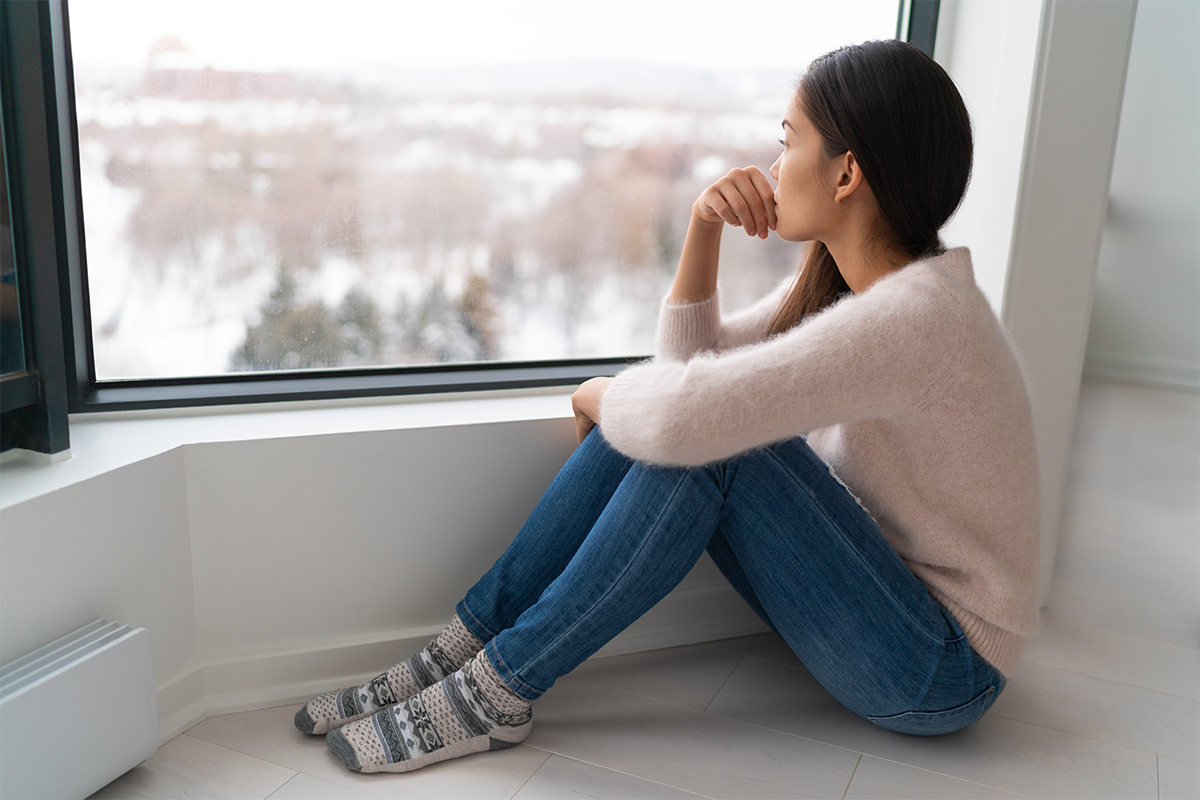If you’re not at your merriest or brightest this time of year, don’t shrug it off as the winter blues.
Seasonal affective disorder (SAD) is a form of depression, and it can cause overwhelming and distressing symptoms that can interfere with your daily life.
The condition affects around 5 percent of adults in the U.S. And like other mood disorders, SAD can get worse if it’s not treated.
What causes SAD?
Seasonal affective disorder is triggered by the change in seasons and most commonly affects people beginning in late fall and can continue through the winter months.
While researchers aren’t exactly sure what causes SAD, there are factors that may trigger it and put you at higher risk for the disorder:
- Changes to the body’s circadian rhythms. The decrease in sunlight in fall and winter can throw off your body’s internal clock and lead to winter-onset SAD.
- Melatonin levels. Melatonin plays a huge role in mood and sleep patterns. Seasonal changes can disrupt the balance.
- Serotonin levels. Reduced sunlight can cause a drop in the brain chemical that affects mood.
- Too little vitamin D. Vitamin D can help boost serotonin activity. Less sunlight and other factors can lower the body’s vitamin D levels.
- Gender and age. SAD is diagnosed more often in women than men and occurs more frequently in younger adults (ages 19-30).
- Family history. If you have a blood relative with SAD, it’s more likely you’ll have it. The same goes for other forms of depression.
- Where you live. SAD is more common among people who live far north or south of the equator where winter brings shorter days and less sunlight.
- Having serious depression or bipolar disorder. Symptoms of depression often worsen seasonally among people with these mental health conditions.
What are the symptoms of SAD?
Symptoms of seasonal affective disorder can vary from person to person. Signs you have SAD may include:
- Feeling sad or depressed most of the day over multiple days
- Feeling hopelessness, guilty or worthless
- Loss of interest in activities you once enjoyed
- Extreme fatigue and diminished energy
- Difficulty concentrating, remembering details and making decisions
- Oversleeping
- Overeating (particularly with cravings for carbohydrates) and weight gain
- Social withdrawal or isolation
- Difficulty sleeping (typically oversleeping)
- Thoughts of death or suicide
While less common, SAD can also affect people during the lighter and warmer months of the year. Symptoms of summer-onset SAD may include:
- Insomnia
- Poor appetite and weight loss
- Agitation or anxiety
- Increased irritability
How is SAD diagnosed and treated?
Sadness is a normal emotion that everyone feels. But if your sadness interferes with your daily living and the things you love, it’s probably time to see a health care clinician. A thorough evaluation will determine if you have SAD or another mood disorder and if you need a referral to a mental health specialist.
If you do have SAD, there are effective treatments – used alone or combined – that can help ease your symptoms, including:
- Light therapy. Phototherapy is often the first-line therapy for treating SAD. The light in these special lamps are 20 times brighter than regular indoor light.
- Cognitive behavioral therapy. Also known as talk therapy, CBT has proven to be an effective and long-lasting approach to treating the symptoms of seasonal affective disorder.
- Medication. Health care providers sometimes recommend antidepressants, either used alone combined with light therapy.
- Vitamin D. Low vitamin D levels can affect your mood and may be linked with a greater risk of SAD. A clinician can help determine if the supplement is appropriate to treat your symptoms.
Tanning beds are no cure for SAD
Don’t believe the promos. Tanning beds are not only an ineffective treatment for SAD, but they also emit dangerously high levels of UV radiation that can seriously damage your skin and eyes.
What can I do to manage my SAD symptoms?
In addition to talking with a health care clinician about how to treat your SAD symptoms, there are other steps you can take to help you cope throughout the dark days of winter:
- Make smart lifestyle choices. A healthy diet, the right amount of sleep and regular exercise go a long way to boost your mental health.
- Avoid alcohol and other unprescribed drugs. Alcohol and other substances can worsen SAD symptoms and may interact negatively with prescribed medication.
- Get a daily dose of daylight (even when it’s cloudy). Time spent outside can lift your mood and reduce your symptoms. Try to find ways to bring more sunshine into your work space or home.
- Try to avoid isolation. When depression hits, being alone can make your symptoms even work. Make the effort to reach out to friends and loved ones, even when you don’t feel like being social.
- Follow up if things aren’t improving. If you’re sticking to your treatment plan and your symptoms aren’t getting better, contact your health care clinician.
Indigo can help lighten the season
When feelings of sadness are more than the winter blues, Indigo is here for you – even if it’s just to start a conversation.
Indigo Virtual Care offers mental health screenings for adults 18 and older. Simply complete a quick questionnaire on your favorite device and get connected with a trusted clinician via video to talk about a care plan and treatment options.
No matter the season, Indigo Virtual Care visits are available 8 am to 8 pm every day.
When you need immediate help
If you or a someone you know is experiencing severe depression or suicidal thoughts, 24/7 help is available:
- Call or text 988 or chat 988lifeline.org to reach the 988 Suicide & Crisis Lifeline.
- Text HOME to 741741, the Crisis Text Line.
- Seek help at the nearest emergency room.


